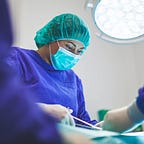Future-Oriented Surgical Education: Concepts and Procedures
The demands of the surgical field are continually changing, and surgical training programs must adapt accordingly. Therefore, surgical education methods must also develop in tandem to ensure that future surgeons are sufficiently prepared.
A student’s first experience in an operating room is during the surgical clerkship rotation in medical school (OR). As a result, classroom instruction moves away from an introductory level and toward a more applied one.
Surgical education has both technical and non-technical components, making it a multifaceted process. It necessitates the introduction of novel, evaluable forms of instruction and assessment.
Students in the medical field are exposed to surgery during their training (OR). On the other side, during their time as surgical clerkship trainees, students’ attention moves from theoretical groundwork to actual practice.
The Halstedian paradigm, developed over the last century, requires surgeons to gain experience by doing hundreds of procedures on patients before they can be considered experts in their field. Unfortunately, duty hour restrictions currently pose a danger to this paradigm by reducing trainees’ chances to get valuable experience.
Teachers must think about metacognition and create innovative methods for moulding students into skilled surgeons. They need to know about pre-training students, doing purposeful practice, and creating mental models.
Learning how to perform surgeries safely and effectively is the goal of surgical education. Medical students, residents, and doctors are all working together on this. Regulatory bodies, professional associations, and academic institutions set this education standard.
The Accreditation Council for Graduate Medical Education (ACGME) has approved numerous surgical residency programs in the United States (ACGME). Programs with this level of the structure are expected to emphasize both theoretical instruction and practical application, with escalating levels of accountability that lead to greater levels of autonomy and independence.
Excellent educators are skilled at relaying feelings of compassion and care, imparting knowledge to students, and fostering a collaborative classroom environment. Understanding the surgical patient’s position, being able to work well with other members of the healthcare team, and being able to handle stress are all essential to a safe and effective surgery.
Excellent surgical educators guide trainees through the surgical process and operative room protocol with a combination of verbal instruction and subtle physical actions (such as supporting or retracting tissues and guiding/repositioning hands/instruments) to help them learn and master the skills necessary to perform the procedures. These strategies allow the educator to meet educational and surgical goals simultaneously.
Educating future surgeons is a difficult task. Surgery is taught in several different ways to medical students and residents.
Traditional methods, including lectures, bedside instruction, and clinical rotations, are still widely used even if other, more cutting-edge approaches have evolved in recent years.
A reliable and valid evaluation system is crucial for a competency-based method of surgical education and training. This is done so students can count on honest assessments of their growth and development.
This paper outlines how the COVID-19 epidemic has forced a rethinking of conventional clinical rotations to develop cutting-edge, practically applicable remote surgical instruction using audio (podcast), audio-visual, and interactive software modules. This is a significant development towards overcoming the obstacles of providing surgical instruction in the future when physical simulators are unavailable.
Interdisciplinary provider teams are supplanting the conventional doctor-nurse-patient interaction, so surgical education must change to equip graduates for the changing nature of the healthcare industry.
In the era of team-based surgical training, surgical educators must understand the relevance of assessment and how it may help them identify student needs and determine which learning modalities work best. Research, innovation, and continuous improvement are all essential to achieving these objectives.
Our goal was to investigate the viability of a new method of training and testing operative surgical skills utilizing an augmented reality simulation tool (AOSS). It was found that learners’ performances are better matched to individual rehearsal vs guided instruction when learning AOSS, that differential difficulty can be attributed to specific micro-skills, and that learners’ positions on the surgical learning curve may dictate the association between competency and speed for a given task.
